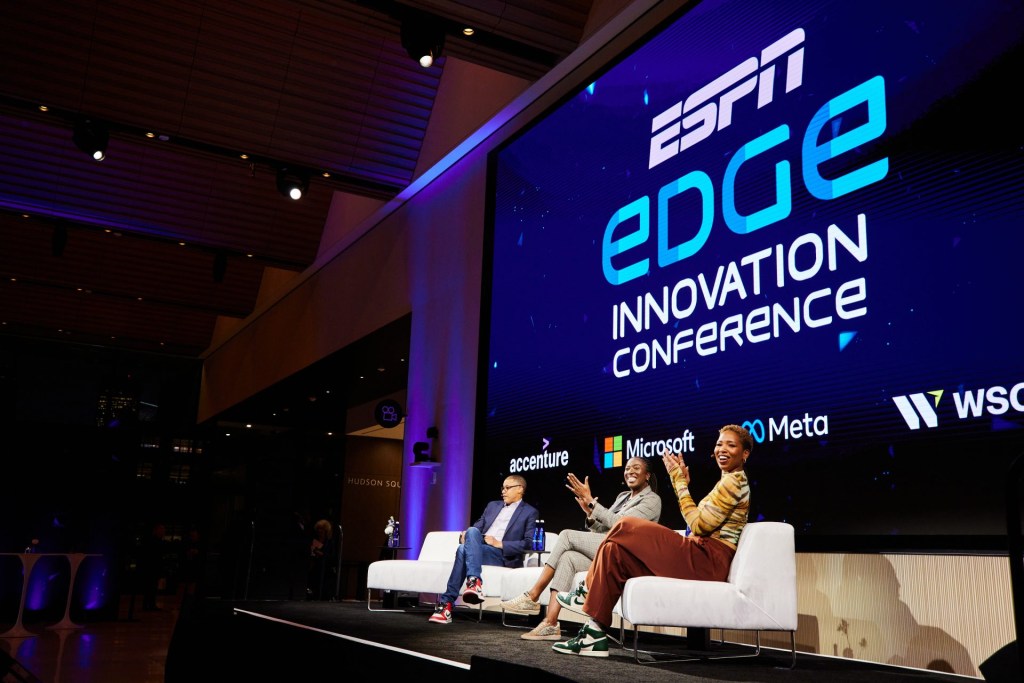
Ratings are up for the Stanley Cup Playoffs thanks to a new broadcast format on NBC. Photo via NHL
NHL Commissioner Gary Bettman had a mandate as his league entered their string of playoff broadcasts: what can the NHL do to be different while enhancing the viewing experience for the fans?
“He hit me with, ‘What can we do differently in these playoffs?’” Sam Flood, NBC executive producer, told USA TODAY Sports. “I gave him a couple of ideas, and he said to get back with him when we locked it down, but we are willing to work with you to try new things.”
The sports landscape is flooded with content this time of year — the NBA playoffs are in full-force, assorted NFL mock drafts seem to fall out of the sky, and the MLB season chugs along day after day. Unless you have a deep allegiance to a singular team or the NHL as a whole, it could be easy for the Stanley Cup Playoffs to fall through the cracks.
To combat this, Flood sparked a conversation with Bettman to brainstorm ideas on how their broadcasts could be improved. Changes to the broadcasts include: a 15-second commercial break after an icing call that splits the screen for the viewer and never detaches them from the action, and the staggering of start times (7:10 pm EST and 7:40 pm EST, for example). Thus far, the results have been positive with a 4% increase in viewership in comparison to the same period last year.
The staggering of start times is especially creative as it provides an opportunity for NBC to split the viewer’s screen once again with an ad on one side and the start of the next game on the other once the period ends. With these initiatives, the NHL is pushing efficiency with their advertisements and allowing fans to consume more action than ever before. Per USA TODAY Sports, the change in format has, “cut about two minutes of traditional advertising out of the mix, and increased the live action a viewer sees by a significant amount.”
That’s huge!
As a fan, any break in the action allows for our subconscious to take over, facilitate our hands over to our phone and divert our attention onto Twitter or any other social channel. Few people find themselves staying tuned during the commercial break outside of Super Bowl Sunday — instead, social media is the commercial break. One could argue that placing an advertisement — even of the split screen variety — sequenced within the action of gameplay would provide a better return on investment for a brand.
As for fans of the NHL, they have been treated to more action on the ice, fewer interruptions, and a better understanding of teams they may not have followed throughout the season. For hockey, a sport that covets additional national attention, these small changes could have a profound impact on building affinity with new viewers.
“I think it will have a long-term positive impact on these playoffs because you have sampled more hockey,” Flood told USA TODAY Sports. “You’ve gotten to know more teams. During the course of the game, you are seeing three five-to-seven minute chunks of the other game. That’s a lot of time to get to know who to care about and what’s going on.”
Other sports leagues have dabbled with these type of broadcast initiatives recently — the NFL flirted with fewer commercials in between an extra point and a kickoff last season. Sports with excessive breaks in the action like basketball and baseball could leverage their downtime into efficiently including advertisements while not disengaging the viewer. The slick split-screen maneuver being utilized during an icing call by the NHL could be the template for commercials that take place after strikeouts or in between free throws.
For now, the NHL will reap the benefits of nudging their nose forward creatively with their broadcasts. Kudos to Bettman and Flood for having the best interests of the viewer in mind while doing so.















